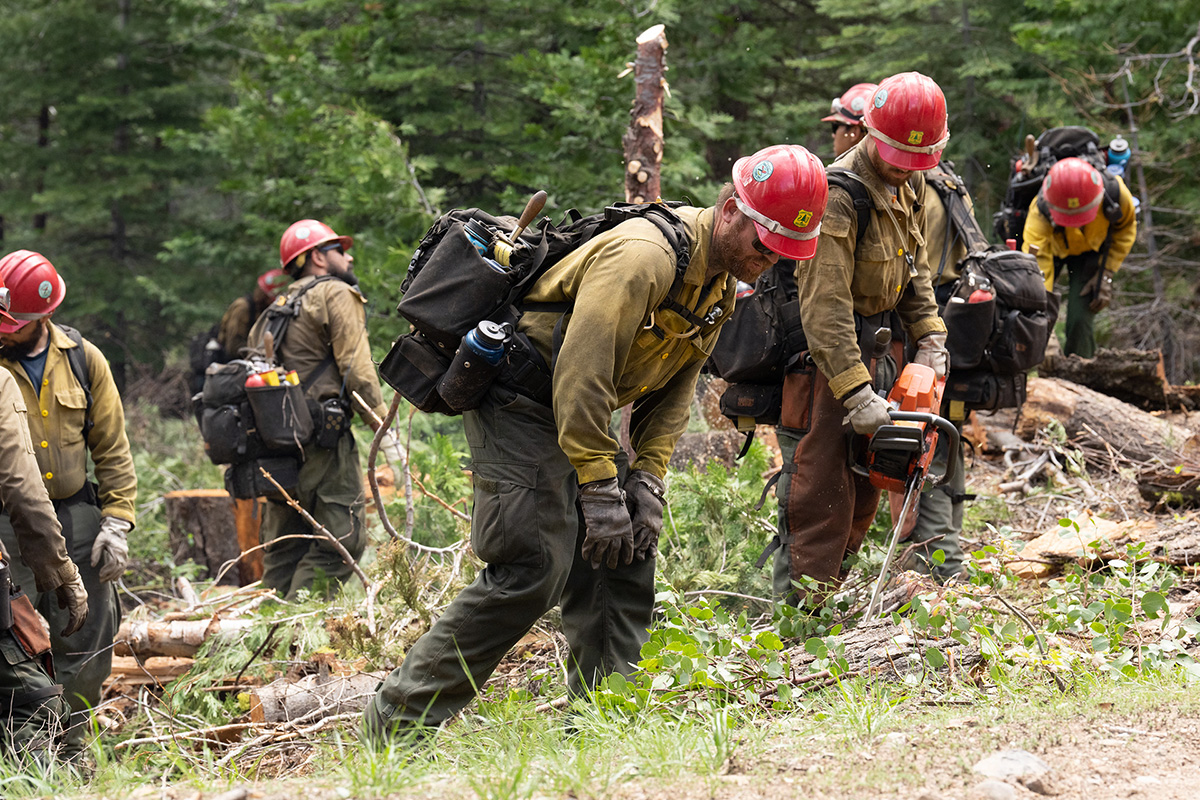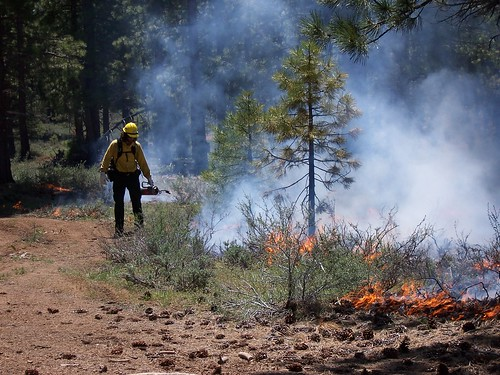
It’s 8 a.m.
Cory Carlson is onsite and ready to start his workday as a district fire management officer in the Chino Valley Ranger District on the Prescott National Forest in Prescott, Arizona. On days when a prescribed fire is planned, he may take on the role of burn boss – a crucial figure in all aspects of the operation, responsible for conducting prescribed fires to protect both the land and the local community. From carrying out the elements of the burn plan, to liaising with local partner agencies, Carlson’s day is an orchestration of skill, precision and collaboration.
Carlson’s current role is part of a legacy that dates back over a century to one of the largest and most devastating fire events in U.S. history, The Big Blowup, also known as the Big Burn.
In the summer of 1910, a series of wildfires swept through the national forests in Idaho, Montana and Washington. These fires would later culminate on August 20, when hurricane-force winds swept through and fanned embers and low flames back to life. The devastation from those fires led to a complete overhaul of fire management in the U.S., eventually giving rise to the U.S. Department of Agriculture’s Forest Service fire suppression policies. However, after a century of fire suppression, it became clear that the agency’s policies were creating more problems than they solved.
Most U.S. forests are adapted to fire, meaning they need fire for rejuvenation or to maintain critical ecological functions. Without a natural fire regime, these fire-adapted forests became unnaturally dense and overgrown. Over time, the Forest Service learned that fire can be a useful tool for forest management. Thus, the prescribed fire burn boss position was born.
Carlson, who started with the Forest Service 23 years ago, has seen how prescribed fire, conducted with careful planning and precision, can reduce the risk of catastrophic and uncharacteristic wildfires while promoting healthier ecosystems.

The Prescott National Forest area: A forest with a long history of fire
The Prescott National Forest area is a clear example of the value of this evolution in fire management. In the past, small fires naturally cycled through the ecosystem, clearing out undergrowth, also known as hazardous fuels, and helping the forest thrive. But over the past few decades, fire suppression efforts, coupled with the growth of nearby communities, have led to an unnatural buildup of these hazardous fuels, which makes the Prescott National Forest and forests like it more vulnerable to catastrophic wildfires. Restoring fire to the landscape helps reduce the buildup of these hazardous fuels, which in turn lowers the risk of catastrophic wildfires and the threat of destruction to homes, infrastructure, and natural resources. This makes Carlson and his team part of a larger national effort to restore fire to the land, protecting both the ecosystem and the surrounding communities.
The Prescott National Forest has made steady progress over the past 20 years with a significant uptick in the scale of prescribed fires. What used to be small 5 to 10-acre prescribed fires have turned into 100 to 200-acre burns and even several thousand acres, like the 4,000-acre burn near the Goldwater Lake, Groom Creek, Ponderosa Park and Indian Creek communities. These communities are home to several thousand residents who enjoy the Prescott National Forest as their backyard. Downtown Prescott and the City of Prescott, home to over 47,000 residents, sit just north of these communities and the forest’s prescribed fires.
“All the stars truly did align during this three-week process to make the Goldwater/Ponderosa Park/Indian Creek prescribed fire one of the most successful prescribed burns to ever occur on the forest,” says Carlson. “Favorable conditions and decades of work done in this area by prior fire managers were huge contributors to the success of this burn. This burn was in the bullseye of the Prescott’s high wildfire risk landscape and in one of the top three high risk firesheds in the country.”
As Carlson reflects on his career in fire management, it’s clear that the evolution of tools, particularly the use of specialized drones, has positively changed prescribed fire. The Prescott National Forest now uses drones instead of firefighters to put fire in steep areas, making the work safer and more efficient.
However, for Carlson and other burn bosses, a deep understanding of the landscape is vital before fire can be prescribed to any area.

Preparing the landscape for a prescribed fire
“We’re not just lighting the forest out there willy-nilly. It’s very strategic. From idea to burn, we have a five-year map that we work from, which is guided by years of planning and interdisciplinary coordination,” Carlson explains.
The five-year Prescott National Forest Land Management Plan and the National Environmental Policy Act define where prescribed fire treatments are needed. In places like Prescott, the highest priority areas are those in or near the wildland-urban interface, where wildfires pose the greatest risk to homes and the entire community, as well as critical infrastructure, such as power lines, communication sites and recreation sites.
Once the land is selected, the real work begins. Carlson works closely with a team of resource specialists to assess the land’s needs and risks. Preparation can take months or even years, with control features such as roads, trails and natural barriers mapped and reinforced. In some cases, handlines, dozer lines or saw lines are constructed.
Next, it’s time to write the burn plan, which outlines the weather conditions, number of resources required, prescription and operational parameters. A qualified agency administrator, usually a district ranger or forest supervisor with the appropriate level of qualification, reviews and signs the plan. It includes 20 elements, and every element has a requirement. If any one of those elements can't be met or mitigated, the burn is put on hold until it can.
When conditions and resources align, Carlson looks for an appropriate weather window. Even when perfect conditions occur, the state air quality agency must approve the burn, and smoke impacts must be monitored. In a nutshell, substantial pre-planning and coordination must take place before implementation can occur.

Burn day: A complex, coordinated effort
Years of preparation culminate on the day of the official burn. Carlson’s morning starts with a briefing with the agency administrator to discuss the “go/no-go” authorization, one of the 20 burn plan elements, ensuring all conditions align with the burn plan. With weather forecasts confirmed and smoke approval granted, Carlson meets with his fire team to double check resources, equipment and personnel. The burn operation is extensive, with teams split up to manage the ignition, monitor smoke impacts and ensure that safety procedures are in place.
Throughout the day, Carlson checks in regularly with dispatch, providing updates on progress and changes in conditions. As the burn dwindles, he’s already thinking about next steps: holding the fire overnight, debriefing his team and carrying out a long-term patrol and monitoring plan before fully releasing resources.
For Carlson, being a burn boss isn’t just about fire. It’s about ensuring that the forests—and the communities alongside them—can thrive for generations to come.
“I was born in Prescott and, having spent my entire life here, one of the most important things to me is making sure this community is protected from catastrophic wildfire, all while reducing the impacts of smoke. I encourage people to stay informed, come to Firewise or fire education events and pass information along to your neighbors,” says Carlson.
###
A special thank you to Public Affairs Specialist Amy Androff for assisting with interviewing and organizing this article.





